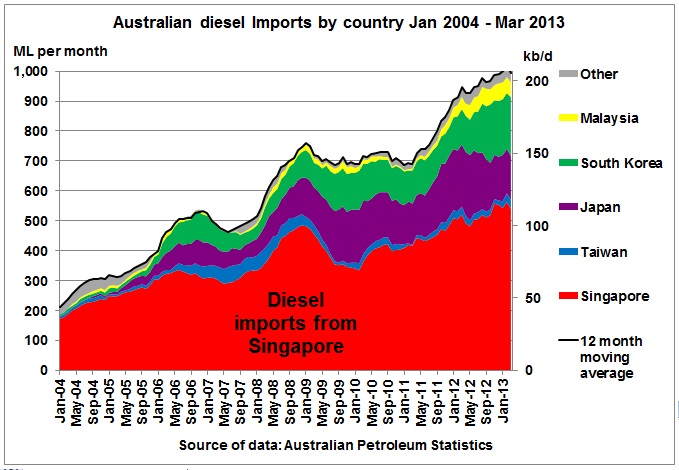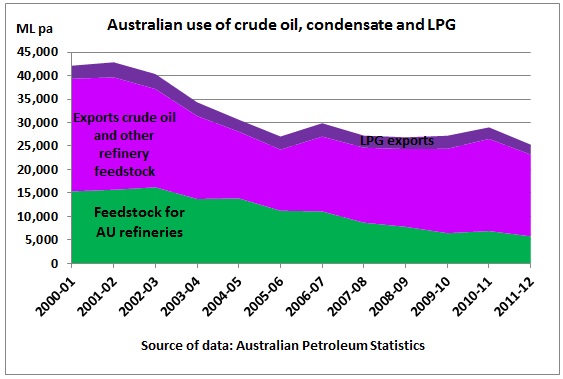Australian crude oil imports
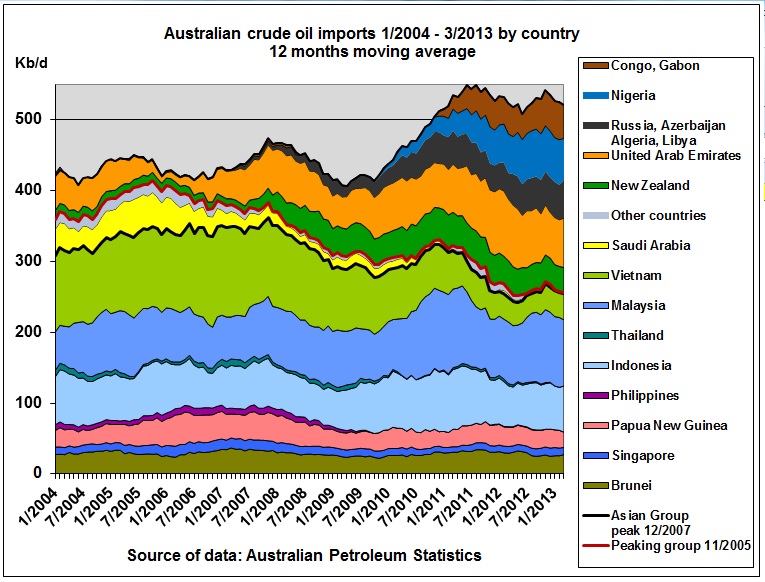 Imports from South East Asian neighbours (black line) peaked in 2007. Since then, Australian refineries did a good job to import crude from far-away places including Russia and were able to actually increase imports. But since 2011 this seems to get harder and harder. The Middle East dependency of crude is only around 14%. But as Australian refineries are closing the last battle will be about fuel imports and their dependency on ME crude. Crude oil from South East Asia
Imports from South East Asian neighbours (black line) peaked in 2007. Since then, Australian refineries did a good job to import crude from far-away places including Russia and were able to actually increase imports. But since 2011 this seems to get harder and harder. The Middle East dependency of crude is only around 14%. But as Australian refineries are closing the last battle will be about fuel imports and their dependency on ME crude. Crude oil from South East Asia  Crude oil production of Australia’s South East Asian neighbours peaked in 1999 (mainly as a result of Indonesia peaking) and declined since then by 25%. The rest peaked in 2004. After 2004, crude production in this group declined by 20%
Crude oil production of Australia’s South East Asian neighbours peaked in 1999 (mainly as a result of Indonesia peaking) and declined since then by 25%. The rest peaked in 2004. After 2004, crude production in this group declined by 20% 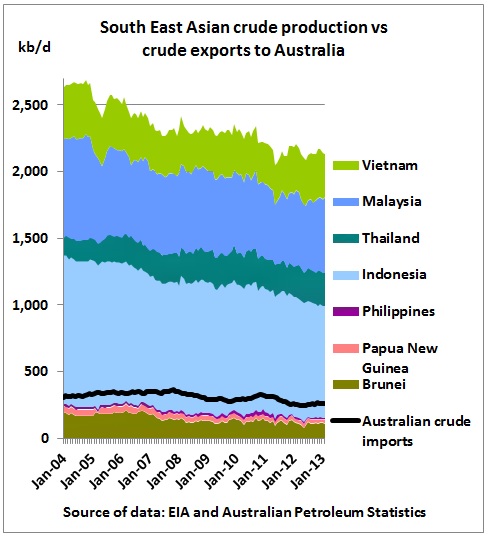
Australia’s fuel imports
Use of Australian crude feedstock
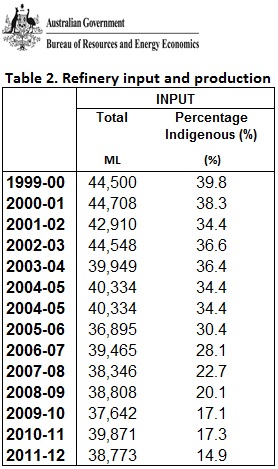
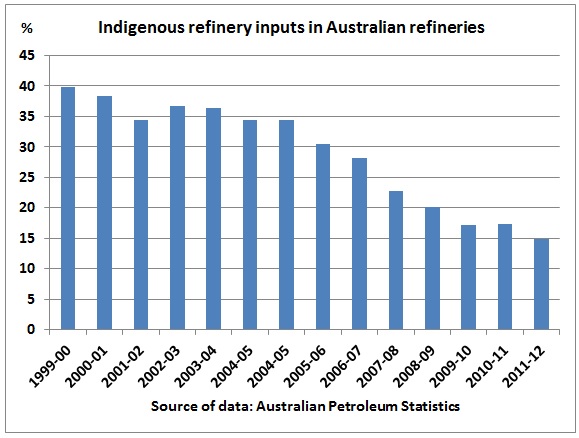 Indigenous refinery inputs have been decreasing from 40% to 15% in 2012. This means that fuels from Australian refineries are now 85% dependent on crude oil imports.
Indigenous refinery inputs have been decreasing from 40% to 15% in 2012. This means that fuels from Australian refineries are now 85% dependent on crude oil imports.
Dependency on imported crude and fuels
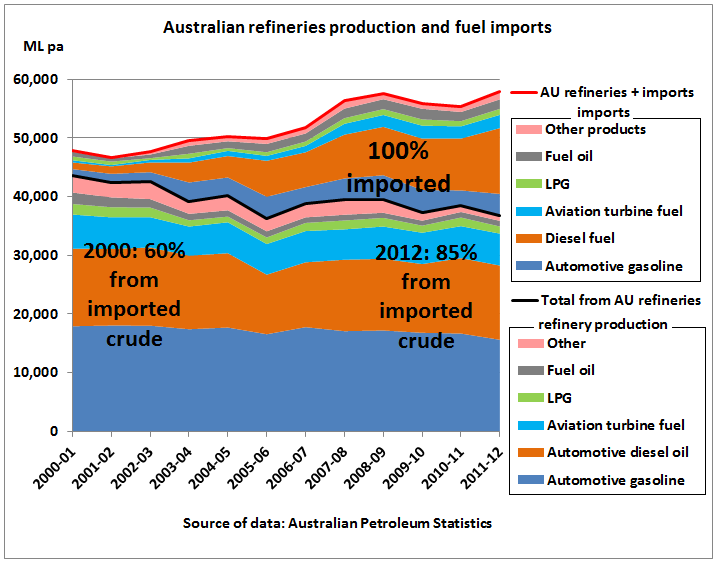 The combined dependency on crude and fuel imports is (36,775 x 85% + 21,026 x 100%)/(36,775+21,026) = 90.5 % Let’s have a closer look at petrol…..
The combined dependency on crude and fuel imports is (36,775 x 85% + 21,026 x 100%)/(36,775+21,026) = 90.5 % Let’s have a closer look at petrol….. 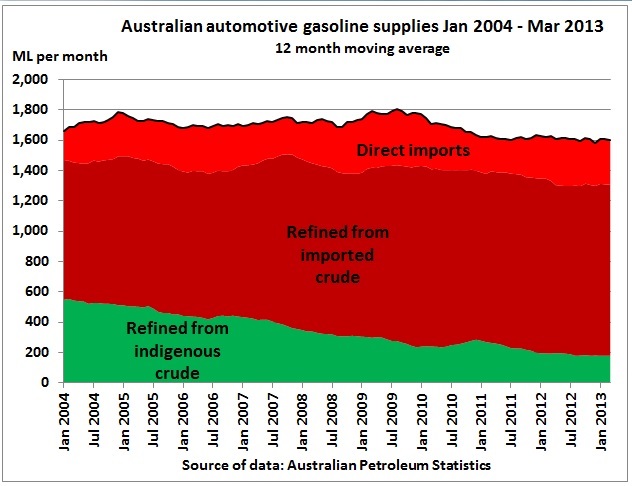 ..and diesel:
..and diesel: 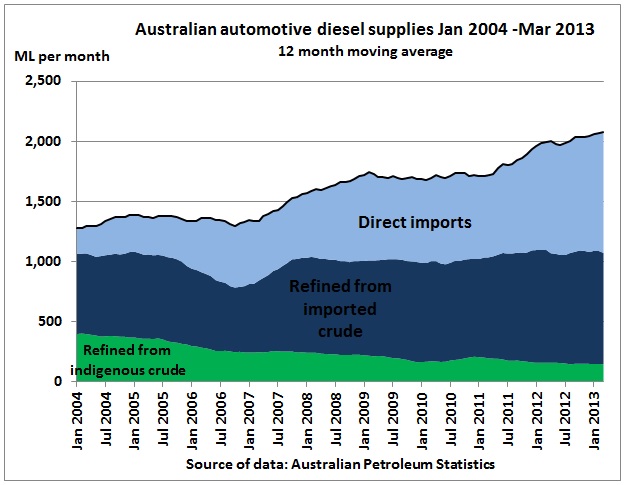 In March 2013, Australia’s diesel dependency on foreign crude and direct imports was 89%
In March 2013, Australia’s diesel dependency on foreign crude and direct imports was 89%
Middle East dependency
Fuel imports from Asian refineries are dependent on Middle East crude oil
Singapore
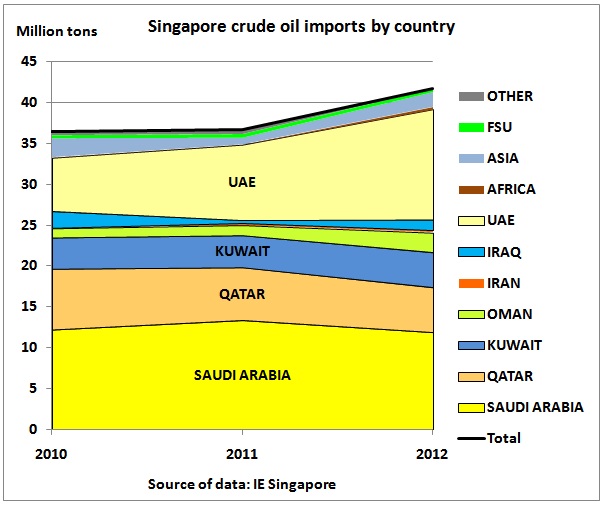 Singapore is 94% dependent on crude oil supplies from the Middle East=
Singapore is 94% dependent on crude oil supplies from the Middle East=
Japan
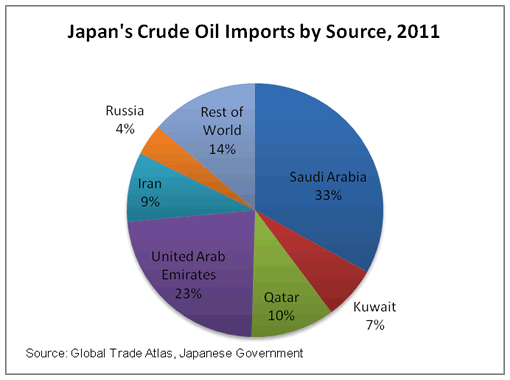 Japan is 82% dependent on the Middle East http://www.eia.gov/countries/cab.cfm?fips=JA
Japan is 82% dependent on the Middle East http://www.eia.gov/countries/cab.cfm?fips=JA
South Korea
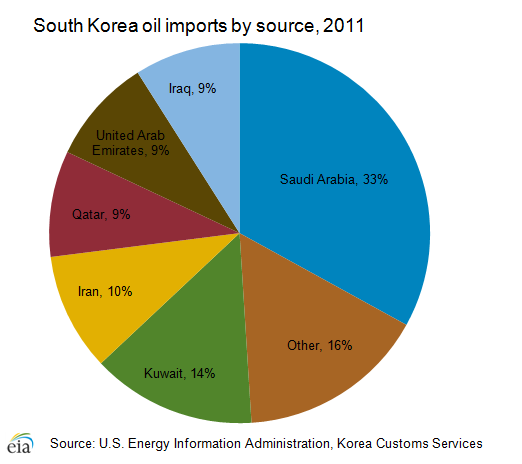 South Korea is 84% dependent on the Middle East http://www.eia.gov/countries/cab.cfm?fips=KS Now we can calculate Australia’s oil and fuel import dependency on the Middle East
South Korea is 84% dependent on the Middle East http://www.eia.gov/countries/cab.cfm?fips=KS Now we can calculate Australia’s oil and fuel import dependency on the Middle East 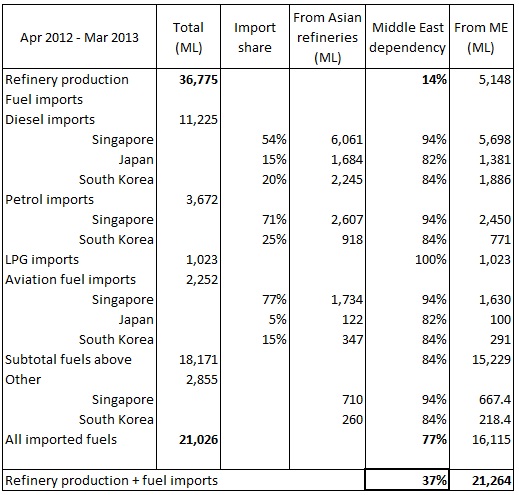 As already mentioned above, the crude oil import dependency on the Middle East is comparatively low at 14% but very high at 77% for fuels from Asian refineries. The dependency will increase to e.g. 42% for the next 6,000 ML of refinery throughput to be mothballed in the next refinery closure. The above table does not include naturally occurring LPG.
As already mentioned above, the crude oil import dependency on the Middle East is comparatively low at 14% but very high at 77% for fuels from Asian refineries. The dependency will increase to e.g. 42% for the next 6,000 ML of refinery throughput to be mothballed in the next refinery closure. The above table does not include naturally occurring LPG.
Liquid fuel vulnerability assessment report
The government’s fuel vulnerability report released in 2011 states: “Overall, on the basis of analysis conducted for the preparation of this report, ACIL Tasman found that recent market developments have not resulted in a significant change in Australia’s liquid fuels vulnerability since the 2008 review, from the perspective of adequacy, reliability or affordability.” and: “Australian refineries produce around 90 per cent of the petrol, 62 per cent of the diesel and 30 per cent of the jet fuel consumed in Australia. The level of self -sufficiency has been relatively stable for petrol and diesel over the period from 2005‐06 to 2009‐10” http://www.ret.gov.au/energy/energy_security/national_energy_security_assessment/Pages/NationalEnergySecurityAssessment.aspx It is obvious that this report has been embellished. A proper definition of self-sufficiency would only relate to fuels refined in Australian refineries from indigenous crude, on a pro-rata basis.
Australia’s crude oil exports
Conclusion:
Australia exports itself oil-poor.
All data are from here: http://www.bree.gov.au/publications/aps/index.html
Related post: 27/7/2012 After Sydney’s refinery closure: Caltex to import fuel from Chevron’s shrinking sales http://crudeoilpeak.info/after-sydney-refinery-closure-caltex-to-import-fuel-from-chevrons-shrinking-sales
.
Update after 3 refinery closures
7/7/2016
Prime Minister Malcolm Turnbull’s exciting energy security in Australia
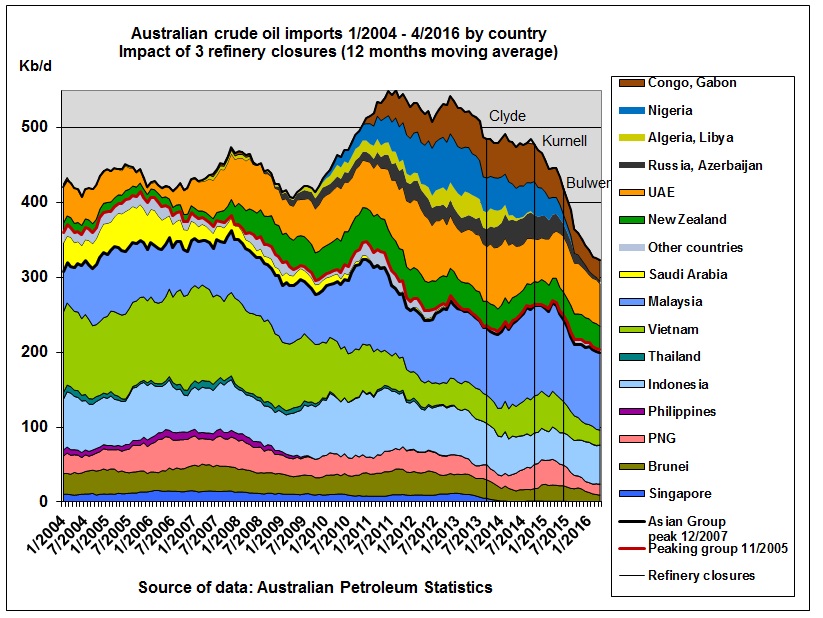
http://crudeoilpeak.info/prime-minister-turnbulls-exciting-energy-security-in-australia
Update April 2017
14/4/2017
Australia more vulnerable than ever to fuel import disruptions
http://crudeoilpeak.info/australia-more-vulnerable-than-ever-to-fuel-import-disruptions
